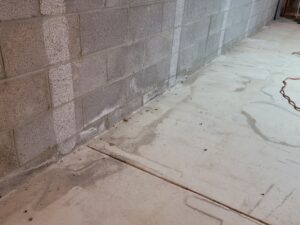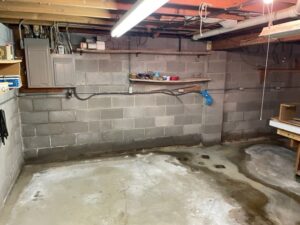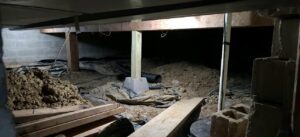This spring in Northeast Ohio and in some parts of the country has been a very rainy one. The flooding that accompanies these spring showers is something that as homeowners we do not want to think about too much. If the basement of your home have issues, the rain that may seep into the basement of your home is probably something that you are expecting, and a problem you might want to tackle right away. Leaving issues like water in the basement are serious enough for you to act right away, instead of postponing them and having larger issues and bills later on.
For more about this and other topics, follow the links below.
Can You Identify These Common House Foundation Issues?
How many times have you heard someone dismiss foundation cracks as simply an old house that’s “settling”? Ignoring foundation problems such as cracks and uneven floors can lead to serious – and expensive – problems down the road.
Homes are built on dirt and, over time, that dirt will shift and settle. Clay, for example, will contract and expand depending on the moisture. Sand will erode after significant rainfall or flooding. Plus, the average home weighs 160 tons so that’s a lot of pressure on the dirt underneath your home, explains Michael Connolly, marketing manager for Lowcountry Basement Systems, which recently moved into the Charleston market.
“Problems don’t get better, they only get worse, and the worse they get the more expensive they will be to fix,” Connolly says.
Foundation issues can keep doors and windows from opening properly. Moisture can get into the house and create mold problems. Not properly repairing these issues can also make it difficult to sell your home down the road, he adds.
Keeping mold away as flooding continues
Greece, N.Y. – As water continues to flood homes along Lake Ontario, homeowners are trying to keep their homes as dry as possible.
Mold remediation is a real possibility, but it has to wait until the water stops coming in.
Christopher Kehoe lives along Edgemere Drive in Greece.
His backyard is surrounded by sandbags, and he has extended his sump pumps since water started moving in.
“This is the outlet of the sump pump. We extended out to the lake to get it as far away from the house as possible,” said Kehoe.
Town coffers crumble along with a region’s home foundations
As the foundation beneath their home crumbles, Christina Mailhos and her husband are trying to figure out how to come up with $200,000 or more for the massive fix while college tuition bills loom for two teenagers.
But that is hardly the extent of her worries. As the top official in this small town, where hundreds of homes may have the same problem, she fears for her constituents’ financial futures and the local economy.
“If a tornado had hit, everyone would come and try to help, and they would bring you a casserole,” she said. “In this case, nobody realizes, and a lot of people are fearful to come forward and talk about it.”
A growing number of home foundations in central and northeastern Connecticut are failing because of the presence of pyrrhotite, a mineral that naturally reacts with oxygen and water. Over decades, that reaction can cause the concrete to crack and crumble, making some homes unsellable and unlivable.
The problem, which first came to light in the mid-1990s, has been traced to a Willington quarry that provided material to a concrete maker whose product was used in thousands of houses. The Connecticut attorney general has not pursued legal action against the company, saying it can’t prove violations of consumer protection laws.






